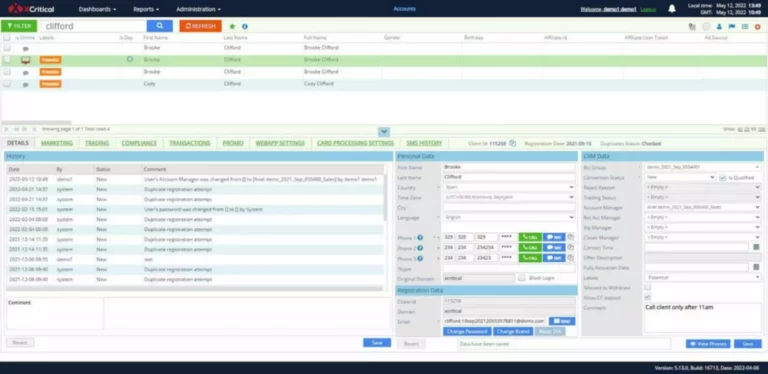Content
The base fee fluctuates, and the price can what are crypto gas fees change depending on the demand of the network. If the network is congested, transactions with higher gas fees will be prioritized. To execute urgent transactions, you increase the gas price to prioritize your transaction. Max fees refer to max-fee-per-gas, which are optional perimeters for gas limits.

How much does Ethereum gas cost?
For instance, transactions on Loopring can cost https://www.xcritical.com/ less than $0.01, compared to several dollars on the Ethereum mainnet. The adoption of these Layer-2 solutions continues to grow, providing scalable and cost-effective alternatives for Ethereum users. Now that you understand how gas fees work on Ethereum, you may feel comfortable enough to experiment with the cryptocurrency yourself.
- MoonPay also makes it easy to sell Ethereum when you decide it’s time to cash out.
- These fees compensate validators for their computational resources, ensuring network security and functionality.
- As a result, Ethereum can only process between 20 and 30 transactions per second, even after the Ethereum Merge.
- Before 2020, gas fees on Ethereum were very low, measured in a few cents with occasional spikes.
- In this case, “locking” ETH for staking purposes refers to the process of agreeing to keep ETH inside the Ethereum ecosystem in exchange for the ability to earn rewards for validating transactions.
- Ethereum is the second largest crypto by market cap after Bitcoin and the leading blockchain platform known for its decentralized applications (dApps) and smart contracts.
Factors Influencing Ethereum (ETH) Gas Fees
Ethereum 2.0, also known as Eth2 or Serenity, aims to enhance the Ethereum network’s scalability, security, and sustainability. The transition from Proof of Work (PoW) to Proof of Stake (PoS) significantly reduces energy consumption and increases transaction Mining pool throughput. Ethereum 2.0 introduces key upgrades like the Beacon Chain, The Merge, and sharding to improve network efficiency and reduce transaction costs. On Ethereum’s execution layer (formerly referred to as Ethereum 1.0), gas fee payouts go to Proof-of-Work (PoW) miners on the Ethereum protocol. On Ethereum’s consensus layer (formerly known as Ethereum 2.0), gas fees are distributed to those staking ETH to support this updated Proof-of-Stake (PoS) variation of Ethereum.
What are governance tokens and how do they work?
More natural gas is consumed in California for vehicle fuel than in any other state in every year on record since 1997, in part because of its many laws and incentives for CNG and LNG. In 2023, California accounted for 51% of the nation’s market for natural gas vehicle fuel. Florida, the state with the next-largest consumption, accounted for 10%, and no other state accounted for more than 3% in 2023. Our analysis estimates that natural gas powers about 156,000 vehicles in the United States, or less than 1% of the 296 million registered vehicles in 2023. While it might seem a steep example, that can sometimes be the case in order to send a transaction or perform a function on Ethereum’s network.
What are Ethereum gas fees? ETH fees explained
Instead, we estimate annual state-level prices using a model in our SEDS. Department of Energy’s Alternative Fuels Data Center’s quarterly Clean Cities Alternative Fuel Price Report survey, and we revised our previous estimates for 2013–22. Ethereum 2.0 is a major upgrade to the Ethereum network that will see the transition of Ethereum’s consensus algorithm go from proof-of-work (PoW) to proof-of-stake (PoS). So, let’s dive into what can make gas fees so expensive and what simple steps you can take to save money when interacting with Ethereum’s ecosystem.
Gas is the fee required to successfully conduct a transaction or execute a contract on the Ethereum blockchain platform. Fees are priced in tiny fractions of the cryptocurrency ether (ETH)—denominations called gwei (10-9 ETH). Gas is used to pay validators for the resources needed to conduct transactions. The fees are used to pay for calculations, storing or manipulating data, or transferring tokens, with each activity consuming different amounts of “gas” units.

Ethereum automatically calculates the base fee based on the demand for block space at any given time. To reduce the cost of your total gas fee through a lower base fee, you could make your transaction on the network at a time when fewer people are using the blockchain. This is because, in a way, base fees are a representation of demand for using Ethereum.
Short, timely articles with graphics on energy, facts, issues, and trends. Forms EIA uses to collect energy data including descriptions, links to survey instructions, and additional information. State energy information, including overviews, rankings, data, and analyses. Maps, tools, and resources related to energy disruptions and infrastructure. Comprehensive data summaries, comparisons, analysis, and projections integrated across all energy sources. There is no such thing as a free lunch and there’s certainly no such thing as a free transaction.
People hate gas fees not only for a general disdain toward fees, but because they can be absurdly expensive when the network is congested. Even with fixed base fees, there’s no certainty that the ETH gas fees will be low. The gas unit (and thus the gas fee) needed for different kinds of transactions is different. For instance, you will need to pay considerably more for complex transactions such as executing a smart contract. Gas fees rise and fall with supply and demand for transactions—if the network is congested, gas prices might be high.
Before 2020, gas fees on Ethereum were very low, measured in a few cents with occasional spikes. After January 2020, gas fees began climbing as the network attracted new users, reaching more than $20 (sometimes much higher) for long periods. Understanding Ethereum gas fees is essential for all users who wish to navigate the platform effectively. Although sometimes burdensome, these fees are vital for keeping the network running smoothly.
Some platforms let you set a gas fee level you are comfortable with and will only execute when prices drop low enough. The tradeoff is that you’ll have to wait an indefinite amount of time before your request is fulfilled. Although users no longer have the ability to change the amount of gas they pay directly to miners, they do have the ability to set higher priority fees. You pay gas fees for a failed transaction because miners still use computational resources to process it. The network charges for the effort spent, regardless of the transaction’s success.
Many factors affect natural gas prices, including weather, supply, demand, international trade, and storage. See our extended analysis on natural gas prices in our Short-Term Energy Outlook. High gas fees occur during high levels of congestion on the Ethereum blockchain. Executing functions on Ethereum’s network consumes computational power and requires gas fees to incentivize validators to carry out the task. Another method of reducing your total gas fee cost is by reducing your tip.
Most Ethereum-compatible digital wallets will help users by automatically determining where priority fees should be set. Paying the right amount of gas for different activities on Ethereum involves setting a gas limit. This is an approximation of the total amount of gas it will take to fuel your transaction. Getting this amount right is no easy task, so most wallets and applications will set the Gas Limit for you. Typically, 21,000 Gas will satisfy most simple, wallet-to-wallet ETH transactions.